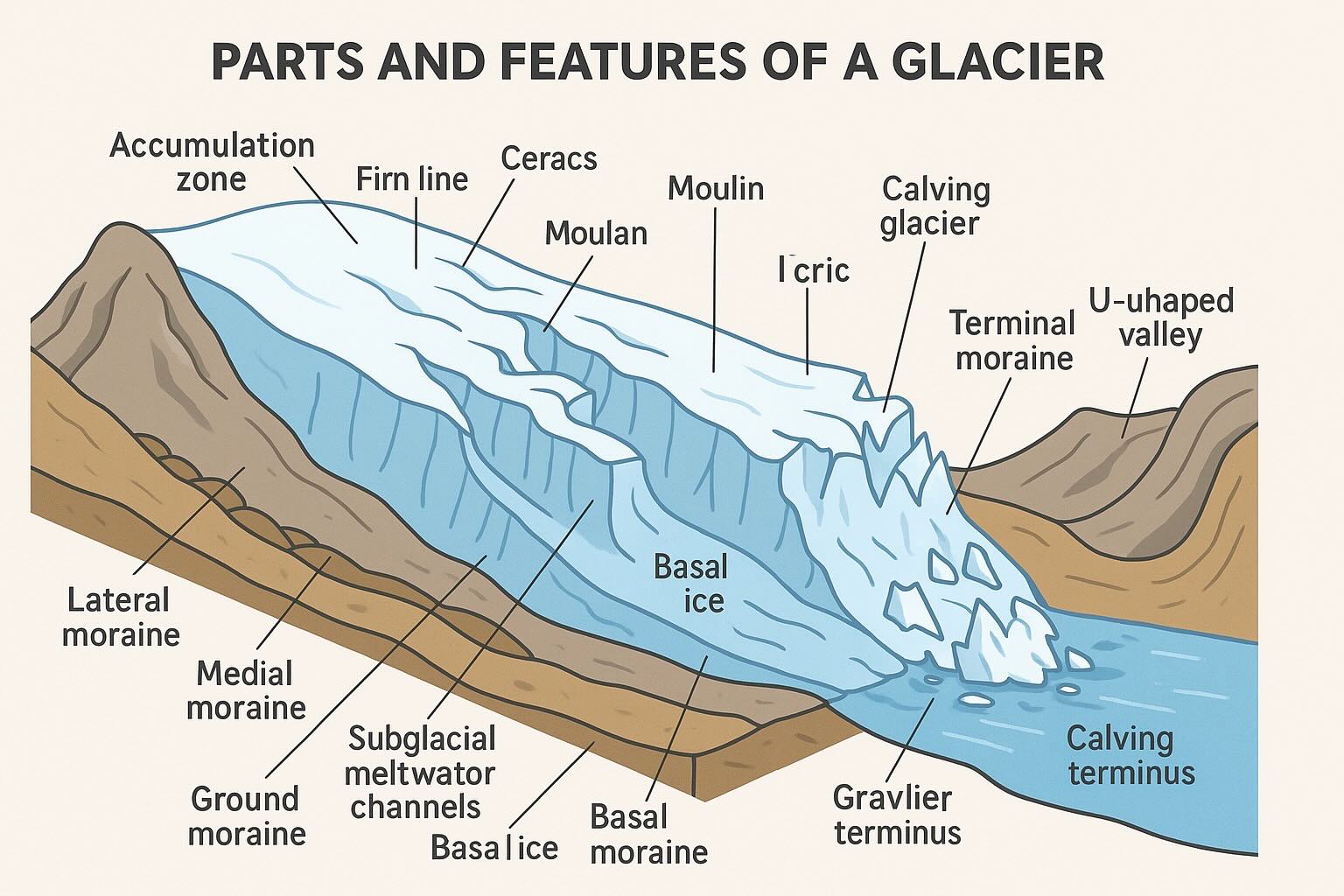

Chile still holds vast ice in Patagonia (the Northern and Southern Patagonian Icefields), but many small cirque/side-valley glaciers in the Norte Chico and Central Andes have vanished or degraded into debris-covered ice and rock glaciers. The Patagonian outlets—long valley, tidewater, and piedmont glaciers—remain extensive yet are mostly retreating and thinning. A rare exception is Pío XI (Brüggen), which continues to advance, while famous outlets such as San Rafael, San Quintín, Jorge Montt, Grey, Tyndall, and Marinelli are in retreat. In Central Chile, small benchmark glaciers like Echaurren Norte show sustained mass-balance losses.
Since the Little Ice Age (~1850), Chilean glaciers have retreated with pauses and readvances, then accelerated loss after the 1990s. The Patagonian icefields show fast areal retreat (order 0.2–0.5% per year) and strong frontal ablation where outlets meet deep fjords/lakes. Notable cases: Jorge Montt opened a long fjord as its front raced back; San Rafael and Grey have thinned and receded; Marinelli in the Darwin Range rapidly withdrew; Pío XI stands out as a rare advancing giant.
PHOTO_YEAR
Description: The 4-digit year of the photograph used for measurements of Chile glacier parameters. Note: If more than one photograph were used, the most relevant year is recorded here; and the others used are recorded in the REMARKS field. In general, the Chile glaciers outlines; and hence, the values for area and length; were determined from Chile aerial photographs, so we recommend using the PHOTO_YEAR for glacier area values.
No Data Value: Null
Example: 1976
MAX_ELEV
Description: Maximum elevation of the highest point of the Chile glacier in meters above sea level, up to 4 digits.
No Data Value: Null
Example: 3962
MEAN_ELEV
Description: The mean elevation is the altitude of the contour line, in meters above sea level, that halves the area of the glacier, up to 4 digits.
No Data Value: Null
Example: 3170
MIN_ELEV
Description: The minimum elevation of the lowest point of the glacier in meters above sea level, up to 4 digits.
No Data Value: Null
Example: 1590
FORM
0 Miscellaneous Any type not listed below.
1 Compound Basins Two or more individual valley glaciers issuing from tributary valleys and coalescing.
2 Compound Basin Two or more individual accumulation basins feeding one glacier system.
3 Simple Basin Single accumulation area.
4 Cirque Occupies a separate, rounded, steep-walled recess which has formed on a mountain side.
5 Niche Small glacier in a V-shaped gully or depression on a mountain slope; generally more common than genetically further-developed cirque glacier.
6 Crater Occurring in extinct or dormant volcanic craters.
7 Ice Apron Irregular, usually thin ice mass which adheres to mountain slopes or ridges.
8 Group A number of similar ice masses occurring in close proximity to one another but are too small to be assessed individually.
9 Remnant Inactive, usually small ice masses left by a receding Chile glacier.
FRONT_PROF:
0 Miscellaneous Any type not listed below.
1 Piedmont Ice field formed on a lowland area by lateral expansion of one or coalescence of several glaciers.
2 Expanded Foot Lobe or fan formed where the lower portion of the glacier leaves the confining wall of a valley and extends on to a less restricted and more level surface.
3 Lobed Part of an ice sheet or ice cap, disqualified as an outlet glacier.
4 Calving Terminus of a glacier sufficiently extending into sea or lake water to produce icebergs; includes- for this inventory- dry land ice calving which would be recognizable from the "lowest glacier elevation."
5 Confluent Coalescing, non-contributing.
6 Irregular, mainly clean ice (mountain or valley glaciers).
7 Irregular, mainly debris-covered (mountain or valley glaciers).
8 Single lobe, mainly clean ice (mountain or valley glaciers).
9 Single lobe, mainly debris-covered (mountain or valley glaciers).
SRC_NOURSH:
0 Unknown
1 Snow
2 Avalanches
3 Superimposed ice
TONGUE_ACT:
0 Uncertain
1 Marked retreat
2 Slight retreat
3 Stationary
4 Slight advance
5 Marked advance
6 Possible surge
7 Known surge
8 Oscillating
TOTAL_AREA:
The total area of the glacier in a horizontal projection in square kilometers.
AREA_ACY:
Area Accuracy Ratings
Rating Accuracy (%)
1 0 - 5
2 5 - 10
3 10 - 15
4 15 - 30
5 > 30
AREA_IN_ST:
The total area of the Chile glacier that resides in the political state concerned in a horizontal projection in square kilometers.
AREA_EXP:
The area of the exposed ice of the glacier in a horizontal projection in square kilometers.
MEAN_WIDTH:
The mean width of the Chile glacier in a horizontal projection in kilometers.
MEAN_LENGT:
Mean length of the Chile glacier in a horizontal projection in kilometers.
MAX_LENGTH:
Maximum length of the Chile glacier in kilometers measured along the most important flowline in a horizontal projection.
MAX_LEN_EX:
Maximum length, in kilometers, of the exposed ice of the glacier in a horizontal projection.
MAX_LEN_AB:
Maximum length, in kilometers, of the ablation area of the Chile glacier in a horizontal projection.
Source: World Glacier Inventory
Map Copyright CCCarto 2024